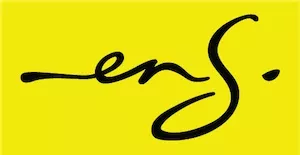- within Intellectual Property topic(s)
- in Africa
- in Africa
- in Africa
- in Africa
- in Africa
- in Africa
- in Africa
- with readers working within the Business & Consumer Services and Retail & Leisure industries
- within International Law, Environment and Finance and Banking topic(s)
Heat It Manufacturing (Pty) Ltd v Michaelides
Background:
Heat It Manufacturing (Pty) Ltd is a company specialising in high-quality heating systems for the poultry industry. Stavrakis Michaelides was a former employee of the company. The company relied heavily on detailed technical drawings to produce its heating systems. Michaelides, who had resigned from the company, was accused of taking these drawings with him, leading to a significant dispute.
Facts
The conflict began when Michaelides resigned from the company on 1 April 2025. Following his departure, the company alleged that Michaelides had taken a USB drive containing essential and sensitive drawings, effectively the "blueprints" required to manufacture their heating systems. These drawings were not only critical to the operation of the company's laser cutting machines but also represented a significant competitive advantage in the market.
Upon realising the loss, the company's director, Mr Vorster, contacted Michaelides, who agreed to return the USB. However, the returned device allegedly contained only the original, outdated drawings, not the updated versions developed over the previous year. Further investigation suggested that the updated drawings had been removed from the company's systems and copied onto a USB, rendering the company's machinery inoperable without extensive reconfiguration.
Michaelides, in his defence, claimed that he had no intention of using or disclosing the applicant's information. He stated that any files in his possession were received in the ordinary course of his duties and that he had deleted all such materials from his devices and messaging platforms after the dispute arose.
The company filed an application requesting the immediate return of the drawings and the USB containing them. Additionally, they sought an order prohibiting Michaelides from using, copying, or distributing the drawings in any manner.
Legal issues
The primary legal issues in this case revolved around:
- Ownership and confidentiality: Whether the manufacturing drawings constituted confidential information belonging to the company, and whether Michaelides had unlawfully retained or misused this information.
- Interdictory relief: Whether the applicant was entitled to an urgent interdict restraining Michaelides from using, copying, or distributing the drawings, and compelling the company to destroy any remaining copies.
- Appropriate remedies and costs: Whether the relief sought was too broad, and how costs should be apportioned given the conduct of both parties.
Court findings
The court held that the drawings were indeed confidential and critical to the applicant's business operations. It was not seriously contested that the applicant had invested in the development and improvement of these drawings, and that their unauthorised use or disclosure could cause significant harm.
While Michaelides denied ongoing possession of the materials, the court noted that, at the time the application was launched, he still had access to the files on his personal devices and had only deleted them after being served with the application. The court found that the requirements for an interdict had been met: the company had a clear right to the information, faced irreparable harm without protection, and had no adequate alternative remedy.
However, the court also noted that the relief sought in the notice of motion was overly broad and that both parties bore some responsibility for the escalation of the dispute. The applicant could have sought undertakings from Michaelides before launching urgent proceedings, while Michaelides should have promptly returned or destroyed all confidential materials. As a result, the court ordered each party to bear its own costs.
The final order prohibited Michaelides from using, copying, or distributing the company's drawings in any way and required Michaelides to destroy any remaining copies in his possession.
Key lessons
- Importance of confidentiality agreements: Ensure that all employees sign comprehensive IP and confidentiality agreements that clearly outline their obligations regarding proprietary information. This can provide a strong legal basis for action if such information is misappropriated.
- Immediate legal action: In cases of intellectual property theft or misappropriation, swift legal action is crucial. Delays can exacerbate the impact on business operations and complicate the recovery of stolen information.
- Employee exit protocols: Implement thorough exit protocols for departing employees, including the return of all company property and a review of any confidential information they had access to. This can help prevent potential disputes and protect sensitive information.
- Legal remedies and enforcement: Be aware of the legal remedies available for intellectual property disputes. Courts can issue orders for the return of stolen information and prohibit its use, providing significant protection for businesses.
- Proactive measures: Regularly review and update your intellectual property protection strategies. This includes training employees on the importance of confidentiality and the legal implications of misappropriating proprietary information.
By understanding and implementing these lessons, businesses can better protect their intellectual property and navigate the complexities of legal disputes.
The case serves as a critical reminder of the importance of protecting intellectual property and the legal mechanisms available to enforce such protection. For businesses, it highlights the need for robust confidentiality agreements, proactive measures, and swift legal action in the face of intellectual property disputes.
The content of this article is intended to provide a general guide to the subject matter. Specialist advice should be sought about your specific circumstances.


